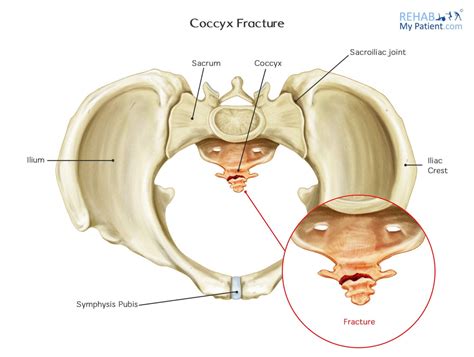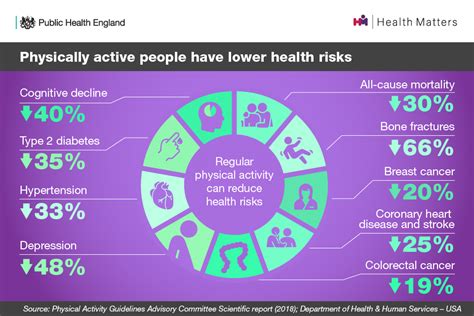Intro
Discover the long-term effects of a fractured coccyx, including chronic pain, numbness, and mobility issues, and learn about treatment options for coccydynia, tailbone injuries, and spinal trauma.
A fractured coccyx, also known as a broken tailbone, can be a painful and debilitating injury. The coccyx, located at the bottom of the spine, plays a crucial role in supporting the body's weight and facilitating movement. When it becomes fractured, it can lead to a range of short-term and long-term effects that can significantly impact a person's quality of life. In this article, we will delve into the importance of understanding the long-term effects of a fractured coccyx and why it is essential to seek proper medical attention.
The coccyx is a complex structure that is composed of three to five fused vertebrae. When it becomes fractured, it can cause a range of symptoms, including pain, numbness, and tingling in the tailbone area. In some cases, the fracture can also lead to more severe complications, such as infection, nerve damage, and chronic pain. It is essential to seek medical attention immediately after suffering a fractured coccyx, as prompt treatment can help alleviate symptoms and prevent long-term effects.
A fractured coccyx can occur due to a variety of reasons, including falls, sports injuries, and childbirth. In some cases, the fracture can be caused by a sudden, traumatic event, while in other cases, it can be the result of repetitive stress or strain on the coccyx. Regardless of the cause, it is crucial to seek medical attention to ensure proper diagnosis and treatment. With proper care and attention, it is possible to manage the symptoms of a fractured coccyx and prevent long-term effects.
Understanding the Long-Term Effects of a Fractured Coccyx

Chronic Pain and its Impact on Daily Life
Chronic pain is one of the most common long-term effects of a fractured coccyx. This pain can be constant or intermittent and can range from mild to severe. In some cases, the pain can be managed with medication, physical therapy, or other treatments, while in other cases, it can be more challenging to alleviate. Chronic pain can significantly impact a person's daily life, making it difficult to perform everyday activities, such as work, socializing, or exercising. It can also lead to emotional and psychological distress, including anxiety, depression, and stress.Treatment Options for a Fractured Coccyx

Medication and its Role in Managing Pain
Medication can play a crucial role in managing pain and inflammation associated with a fractured coccyx. Over-the-counter pain medications, such as acetaminophen or ibuprofen, may be prescribed to manage mild to moderate pain, while stronger pain medications, such as opioids, may be prescribed for more severe pain. In addition to pain medication, other medications, such as muscle relaxants or anti-inflammatory medications, may be prescribed to manage muscle spasms or inflammation.Prevention and Management of Long-Term Effects

Lifestyle Modifications and their Impact on Recovery
Lifestyle modifications can play a significant role in recovering from a fractured coccyx and preventing long-term effects. Maintaining a healthy weight can help reduce pressure on the coccyx, while exercising regularly can help improve mobility and strength. Avoiding repetitive stress or strain on the coccyx, such as sitting or standing for long periods, can also help prevent long-term effects. Additionally, incorporating stress-reducing activities, such as meditation or yoga, can help manage emotional and psychological distress associated with a fractured coccyx.Seeking Medical Attention and Support

The Importance of Follow-Up Care
Follow-up care is essential when recovering from a fractured coccyx. Regular follow-up appointments with a healthcare professional can help monitor progress, manage symptoms, and prevent long-term effects. Additionally, follow-up care can help identify any potential complications or concerns, such as infection or nerve damage, and provide prompt treatment.Conclusion and Next Steps

We invite you to share your thoughts and experiences with a fractured coccyx in the comments below. Have you or someone you know suffered from a fractured coccyx? What were some of the challenges you faced, and how did you manage your symptoms? Your insights and stories can help others who may be going through a similar experience.
What are the common causes of a fractured coccyx?
+A fractured coccyx can occur due to a variety of reasons, including falls, sports injuries, and childbirth. In some cases, the fracture can be caused by a sudden, traumatic event, while in other cases, it can be the result of repetitive stress or strain on the coccyx.
What are the symptoms of a fractured coccyx?
+The symptoms of a fractured coccyx can include pain, numbness, and tingling in the tailbone area. In some cases, the fracture can also lead to more severe complications, such as infection, nerve damage, and chronic pain.
How is a fractured coccyx diagnosed?
+A fractured coccyx is typically diagnosed through a physical examination, medical history, and imaging tests, such as X-rays or CT scans. In some cases, additional tests, such as an MRI or bone scan, may be ordered to confirm the diagnosis.
What are the treatment options for a fractured coccyx?
+The treatment options for a fractured coccyx can include medication, physical therapy, and surgery. The treatment approach will depend on the severity of the fracture and the individual's overall health.
Can a fractured coccyx be prevented?
+While it may not be possible to prevent all cases of a fractured coccyx, there are steps that can be taken to reduce the risk. These include maintaining a healthy weight, exercising regularly, and avoiding repetitive stress or strain on the coccyx.
